Check out Measuredability’s General Articles Section
Strategies for Managing Night Shift Nurses
in GeneralThe 24/7 nature of health care means the need for night shift nurses will never wane, and many nurses find the evening shift to be an appealing, stable option. For managers, the challenge lies in effectively managing your night shift nursing staff, even with limited interaction.
In this article, we will uncover nurse self-management strategies and how managers can support nurses and optimise their shifts for the better.
So, what constitutes a night shift?
Although the length and times of a shift may vary by employer, most night shifts last between eight and 12 hours and fall between 7 p.m. and 7 a.m. However, the unpredictable nature of nursing can sometimes cause scheduled shift times and lengths to fluctuate. Additionally, some nurses choose to rotate between overnight and daytime shifts.
Before we can highlight the challenges and suggestions to improve the night shift team, let’s understand what working the night shift entails and what your staff need to do to maintain a good work-life balance.
The Challenges of Working Night Shift
Though there are several benefits, there are some drawbacks to the night shift – it’s not for everyone.
Working at night opposes the body’s natural circadian rhythms. As a result, some night shift nurses have difficulty achieving consistent, sufficient, and satisfying sleep. Even if there is substantial time to sleep during the day, the body often finds it difficult to fall asleep during hours when the sun is out. Plus, obligations during the day, such as childcare or appointments during business hours, can keep night shift nurses from getting adequate rest during their hours off.
If you don’t get good rest while working the night shift, you may encounter adverse effects, many of which can make your role as a nurse more difficult. According to the Sleep Foundation, a lack of adequate rest can lead to:
- Slow thinking. Slow thinking can affect your ability to do your job properly, and quick thinking can mean the difference between life and death in some health care situations.
- Reduced attention span. The inability to focus can make simple tasks harder to complete, leading to added stress during a shift.
- Irritability, stress, and anxiety. If left unchecked, these mood changes can lead to long-term physical and emotional issues.
- Worsened memory. A memory decline can jeopardize the safety of patients and professional success.
- Poor decision-making. Fast decision-making is a pivotal skill in nursing. Preserving your ability to synthesize information quickly to make a potentially life-saving call is critical.
Chronic sleep deprivation can lead to cardiovascular disease, hormonal abnormalities, and mental health disorders, among other issues. Other reported disadvantages that arise from working night shifts include insomnia, increased risk of dangerous driving due to drowsiness, and a strain on familial relationships.
Despite these risks and challenges, many nurses prefer the night shift because it helps them maintain flexibility in their personal lives while positively impacting their patients’ well-being. Ultimately, working a night shift can be a rewarding experience for many nurses when managed correctly.
Tips for Night Shift Nursing
Ensuring that you have the support and self-care techniques to handle night shift nursing is key to thriving during the night shift. Follow these tips to keep yourself in peak shape while working the night shift:
- Create a schedule and stick to it, planning activities that support healthy sleep habits.
- Find ways to relieve stress to ensure that you get the best quality sleep possible.
- Exercise often. Even just a walk can help your ability to sleep and decrease your stress levels.
- Continue to pursue social activity and do things that bring you joy.
- Maintain a positive outlook and take advantage of the benefits of working the night shift.
To thrive as a night shift nurse, it’s vital to plan and ensure restful sleep. Now that we have covered what the night shift entails for nurses, let’s take a look at the challenges and tips to manage your night shift staff effectively.
The Do’s and Don’ts for Managing Your Night Shift Staff
As a nursing manager or unit manager, you should strike a balance between being supportive and visible to your staff whilst maintaining good communication between both shifts to keep unit morale up and well. The last thing you want is your night staff feeling isolated and disengaged.
If left unchecked you could end up with very different cultures between the same unit and potentially differences in practice. At worst, it can lead to conflict between shifts that destroy unit morale.
The following are some dos and don’ts to consider in leading the night shift:
Do
- Keep in regular contact with the administrative supervisors who work nights to obtain their perspective on the functioning of your unit on that tour. Ask them to contact you if they see problems that you need to be aware of.
- Schedule yourself to work all or part of the night shift quarterly. Let the staff know you will be working and are there to listen to their concerns.
- Establish some protocols for what type of situations occur on nights that you want to be immediately notified about.
- Demonstrate gratitude for nurses who work the night shift and recognize the inconvenience and sacrifices they make in their personal lives.
- Monitor how staffing is done to cover night shifts to ensure that staff can get adequate rest between tours.
- Arrange periodic huddles with your night tour staff to communicate policy and practice changes and/or establish a unified communication group.
- Maintain ongoing contact with the night charge nurses for their input into unit decisions.
- Evaluate on an ongoing basis the workload on nights relative to admissions, discharges, transfers and workload.
- Ensure that you have night shift nurses who can serve as strong and positive preceptors for new graduates placed on the shift.
- Be proactive in managing any conflict that you observe between the shifts.
- Encourage healthy habits and be an advocate for night shifts in having access to cafeteria food and other amenities.
Don’t
- Assume that the workload on nights is easier.
- Ignore signs of extreme staff fatigue or sleep deprivation and whether it is safe for a staff member to drive home.
- Change policies or practices on the unit without input from the night shift.
- Let practices like bedside rounding be discarded on the night shift.
- Listen to gossip from your day shift staff about what happens on nights without involving the night shift staff.
- Place new graduates on the night shift unless there are experienced staff to coach them.
- Lower your hiring standards because you are desperate to fill a night shift position.
- Destroy your personal life by responding to regular texts at night or coming in early every day to handle the night shift – and then staying late.
- Tolerate a high level of absenteeism on nights.
- Forget to include your night shift staff in disaster and crisis training as many of these incidents occur during the night shift.
- Allow night staff to opt out of self-governance initiatives.
At most 24/7 units, between 30 and 40 per cent of your staff will work the night shift. Without active collaboration with their manager, they can easily feel they work in a different hospital than the day shift. It is your job to ensure this does not happen.
Night shift staff play a unique role in units to keep patients safe while the rest of the staff sleeps. They need to feel valued and respected for the work that they do.
If you are looking to source the best nursing staff to join your night or day shift teams then you should consider reaching out to Grey’s nursing agency to help find the right employee to join your team.
Grey’s has over 40 years of experience in the recruitment industry and specialises in sourcing the best and most qualified staff for roles within nursing countrywide. Contact us today to learn more about our nursing recruitment.
7 Tips for Creating Effective Online Job Ads
in GeneralSorting through job applications can be a tedious and time-consuming process, and there are multiple things candidates do in their submissions that add to the stress. Duplicate submissions, false documents, and template CVs are all potential errors that make the recruitment process more challenging than it has to be.
At MASA, we have experienced all this and more in our years of staffing and online recruitment, and here is one core lesson we can share: The standard of your job applications depends heavily on the quality of your job post. If job postings are adverts for specific roles in your company, it’s vital to make them as attractive, informative, and straightforward as possible.
Fortunately, there are some best practices you can follow to create job ads that drive better results for your recruitment. Join us as we step into the online recruitment process and explore seven actionable tips for upgrading your online job advertising strategy.
The value of job ads in online recruitment
Job advertising can seem like a very complex, technical, and sometimes rather dull process that requires employers to understand multiple aspects of online recruitment. Gone are the days when newspaper listings, word of mouth, and sticking printed job ads around the city were an effective strategy to recruit good quality staff.
We also live in a highly competitive economy where companies use the latest technology, including online job advertising and marketing, as critical components of their business growth strategies. In fact, 86% of HR professionals say recruitment is becoming more like marketing, highlighting just how essential ads are in the modern job market.
The shift to online recruitment has given job seekers unprecedented access to prospective employers and the ability to network, conduct research, and apply for the most desirable roles—all from the comfort of their phones or computers.
So, how do you position yourself to attract and hire top talent in 2022 and beyond?
7 tips for effective job advertisements
1. Start improving your employer brand
Before you even get to the actual job ads, you must take steps to improve the image of our company as a place where employees want to work. Why should you do that, you may ask? Well, 75% of active job seekers are likely to apply to a job if the employer actively manages its employer brand.
From social media, company websites, and review platforms, top candidates are going beyond job listings to learn more about the organisations behind them and whether they’re the right place for them. Employer brands show potential employees how their careers in the organisation will be, so make sure you invest in it accordingly.
Your website is the home base for showcasing your organisation to candidates and letting them know everything there is to know about it. The about us page should feature your company’s mission and values, as this instils the level of purpose that candidates will gain from working with you.
You can use social media to build an even more authentic image that connects to the candidate’s interests and career goals. This is an excellent place to create conversation with a job-seeking audience and share behind-the-scenes content from your current employees’ work life.
On the other hand, review sites are mainly out of your control. Past customers and employees will leave feedback on their experiences with your company, so building positive employee-employer and company-to-client relationships is essential.
Pro-tip: Ask for reviews from your best employees and customers. They can leave these reviews on company job boards where your organisation is listed, social media, or on recruitment platforms. These reviews will go a long way towards building a stronger company and employer brand that lasts.
2. Review your past job postings
You have a new vacancy you need to fill, and the job ads you created generated no responses or, at the very least, a few unsatisfactory ones. This is a good time to review your job postings to determine why they are not yielding the desired results. You can begin by examining your online recruitment efforts to outline critical details like:
- The total number of job advertisements posted
- Which platforms did you post to
- The number of applications received on each ad platform
- The number of job ads that lead to hires
The purpose of gathering this data is to identify any holes in the process that might cost you, applicants. By detailing where you posted your job ads, how many applications you received on each platform, and how many of them led to successful hires, you can see whether or not your current hiring strategy is consistent with the data.
For example, let’s say you have posted the same job advertisement on LinkedIn and Indeed. You can now measure the average number of applications each platform yields and determine which platform you hire candidates from on average. This will give you a clearer idea of where to improve or where you should focus your future recruitment efforts.
3. Use strong and relevant keywords in your job ads
Your job posting serves various functions, including demystifying a position, providing clarity, and differentiating one opportunity from another. In a market flooded with candidates looking for work, you’ll want to be the first recruiter to attract and connect with the most qualified candidates. What does this have to do with keywords?
A large percentage of job seekers search using only keywords. Incorporating words associated with your job in the title and description will make your job posting searchable via search engines. Search engine optimisation (SEO) is a detailed and complex technique that top recruitment agencies leverage to improve the visibility of your job advertisements.
This is only one small tip you can use to make your job ads more relevant to the job seeker and therefore appear higher in their search results.
Pro-tip: Avoid using keywords in your title that feature industry jargon or acronyms that may confuse applicants, like CoO (Co-ordinator) or HRG (HR Generalist). Instead, titles should include specific job titles such as “Sales Associate” or “Senior Project Manager.”
Partner with the pros
Ultimately, a lot more goes into creating a killer job advertising strategy. These are only a few of the many vital elements that are crucial to crafting effective job ads that are targeted to the right applicants.
If you want to learn more, you can connect with a staffing specialist to handle your company’s unique recruitment needs. MASA is a leading staffing agency with four decades of providing blue and white-collar staffing solutions to multinational corporates. We leverage the best-in-class technologies, techniques, and a comprehensive database of qualified talent to serve our clients the best in their industry.
Contact MASA today for industry-leading staffing solutions and expert consultation from trusted employment specialists.
Payroll Security: 5 Tips and Tricks for Safeguarding Your Data
in GeneralFocusing on your payroll’s security is one of the best ways to ensure your data remains secure. We detail five tips you can use to improve your current process and ensure that your employee and financial information is safe.
What is payroll security?
Payroll security entails taking precautions to prevent sensitive company and employee information from being compromised by employees or outside actors such as hackers.
Processing payroll is more than just paying employees for their skills and expertise. It can be time-consuming and frustrating, especially with the threat of losing critical data along the way. That’s why employers must set up a secure payroll system to safeguard their company’s payroll and provide maximum security to the entire team.
Common sources of payroll security issues include timesheet fraud, pay rate alterations, and data breaches—though the exact nature of these varies by the type of business.
If you take essential steps to safeguard your business’ data, it’s possible to create a secure payroll system using software or by partnering with an experienced payroll specialist.
Why Does a Payroll System Need Security?
Every payroll period, your company manages mountains of personally identifiable information (PII) on your employees. Your database is left vulnerable to potential hackers if you lack security systems.
A breach in payroll information can lead to more than just identity theft. In fact, a minor leak can lead to fraud, hurt your brand image and result in losing employee trust, confidence and loyalty. Smaller companies might be lulled into a false sense of security, thinking, “hackers have bigger fish to catch.” That line of thinking can come at a high cost.
According to Forbes, payroll fraud occurs nearly twice as often in smaller businesses than in large organisations. The reason behind this is quite simple; these companies tend to have fewer anti-fraud controls in place, making them an easier target.
Unfortunately, payroll fraud is more than a quick cash grab. The Association of Certified Fraud Examiners (ACFE) reports that payroll fraud schemes are the longest-lasting form of fraud, with an average lifespan of 30 months. Without proper systems in place, you could go years without ever detecting the ongoing theft of your data or money.
The Common Types of Payroll Fraud
Hacking isn’t the only challenge businesses need to be on the lookout for. Payroll fraud can result in significant losses to a company as well. Here are some more common methods of fraud:
- Advance Retention – This type of fraud occurs when an employee requests a pay advance and fails to pay it back. Always review advances to make sure they’re repaid.
- Buddy Punching – When an employee asks another to punch in for him and doesn’t report to work, this is another type of payroll fraud. Biometric time clocks can help eliminate this practice.
- Ghost Employee – Sometimes, an unscrupulous payroll employee creates a fake employee, doesn’t immediately delete a terminated employee or alters a payment record to change direct deposit information. Always be sure to periodically audit payroll records to prevent ghosts.
- Unauthorised Hours – Hourly employees who pad their timesheets with unworked hours are committing payroll fraud. Ensure managers review all hours and don’t just issue blanket approvals.
The Best Ways to Protect Payroll
1. Create strong passwords & set up encryptions
Using strong passwords for their payroll software and computers prevents unauthorised personnel from accessing payroll data. A strong password contains at least eight characters, including uppercase letters, lowercase letters, symbols, and numbers.
Also, when creating a password for the computers and payroll software, companies should avoid using their names, birthday or a family member’s name. In addition, they should avoid using the same password for multiple accounts.
Consider setting un encryptions on your payroll and date to add an extra layer of protection.
2. Separate payroll duties
Companies can also protect their payroll by delegating payroll duties to multiple employees. For instance, they can choose different people to manage payroll, issue payments, review time cards, authorise payroll, and report payroll. This way, they will be able to deter payroll fraud.
3. Restrict payroll access
Employers should put one or two employees in charge of payroll processing to access payroll information and other sensitive data. This way, they will know who to hold accountable.
4. Outsource Your Payroll Process
If you’re a busy business owner, it can be challenging to dedicate the time and energy necessary to maintain a secure payroll system. Likewise, you may not have room in your budget to hire full-time HR or payroll specialists. Hiring a third-party payroll provider can help you save time while ensuring your company is protected by comprehensive security measures.
That said, when outsourcing your payroll, there are a few important considerations to help you find the most secure provider. Here are some tips:
- Ask about security features incorporated in employee time tracking processes
- Confirm that there is a secure way for employees to access their payroll history
- Research the provider’s reputation, including its handling of security issues
- Understand the services offered by each provider and how they will integrate with your business’ other security measures
- Balance your budget and your business’ payroll needs against the importance of a secure and reliable payroll provider
5. Conduct Regular Payroll Department Audits
Payroll audits help business owners prevent or minimise fraud and embezzlement threats while also ensuring payroll processes comply with tax and labour laws. In general, you should conduct a payroll audit at least annually, but quarterly or monthly mini-audits can provide more comprehensive insights into the health of your payroll system. When running a payroll audit, take essential steps, like:
- Confirming employee information, including pay rates and pay periods
- Spot-checking 5% to 10% of your employee W-4 forms to look for possible systemic issues
- Comparing hours in payroll records to hours reported on timecards
- Running a ledger report that shows every transaction in your company to ensure it aligns with payroll records
Benefits of Payroll Security Measures
1. It prevents identity theft
Having a secure payroll safeguards employee information from identity theft. If payroll data is insecure, someone can access confidential employee information such as bank account numbers or social security numbers and use them for illegal purposes.
2. It prevents jealousy and conflict in the workplace
If payroll information is left out in the open, it may result in jealousy and conflict at the workplace regarding salaries, bonuses, and benefits.
Securing payroll is the best way to safeguard this information and prevent the lower employee from getting jealous. However, it is worth noting that employers cannot prevent employees from discussing their salaries with each other.
3. It protects tax and benefit information
Securing payroll helps protect vital company information like benefits and tax documents. Only the business owner is supposed to have access to such information. Hackers can access and use it against the company.
Summing Up
Hackers and other unauthorised personnel can access a company’s payroll information anytime if they are not careful. This can lead to a massive loss of personal data that can easily taint the company’s reputation.
Fortunately, payroll services like MASA have years of industry experience and high levels of security to ensure your information will be safe and adds a layer of protection to any company’s payroll information.
Our in-house specialists process over 12,000 payroll transactions monthly worldwide through best-in-class payroll systems and develop custom reports to give you a detailed view of your company’s payroll. We also update and submit all the correct documentation to the relevant bodies, ensuring payroll compliance and reducing risk.
You can get in contact with us today to learn more about our payroll solutions!
Tips for Using LinkedIn Effectively for Recruitment?
in GeneralSocial media has impacted society, industry, and work as we know it, with platforms like LinkedIn allowing professionals to connect, communicate, and collaborate in previously impossible ways.
To put things into perspective, 49 million people use LinkedIn to search for jobs weekly, while six people are hired through LinkedIn every minute. These numbers highlight the importance of LinkedIn in the modern world, which is why so many entrepreneurs, executives, and freelancers alike have made it their platform of choice.
Companies are also turning to LinkedIn to attract the right talent, build their organisations, and stay tapped into talent opportunities. Read on to learn more about recruiting through LinkedIn and tips for effectively using the platform in your recruitment strategy.
LinkedIn for recruitment
LinkedIn is a business and employment service launched on May 5, 2003. With more than 850 million members, and 58 million listed companies, it has become one of the world’s largest business and employment networks on the Internet, bringing together professionals to exchange information, ideas, and opportunities.
Companies can use LinkedIn as a competitive advantage by leveraging extensive features such as job postings, profile searching, organic content, and more. This allows them to connect with qualified candidates, enhance their brand through professional content, and create a robust recruitment channel to attract top talent.
The top LinkedIn features:
LinkedIn’s most valuable tool for recruitment is, undoubtedly, LinkedIn Recruiter—a robust, efficient recruiting tool to help companies proactively find and reach suitable candidates, using:
Candidate search: Recruiters can tailor their LinkedIn searches to find candidates at various stages of the hiring process, sorting by skills, current company, and more. The feature also comes with custom recommendations based on profile information.
InMail messaging: Once candidates are identified, recruiters can send them tailored messages through LinkedIn InMail to follow up with them and schedule interviews. Recruiters can also get notifications on the go through the mobile app, so they don’t miss an opportunity to move a candidate along the recruitment process.
Recruiter projects: Recruiters can organise their work, track candidates throughout the recruitment process, and create team projects to manage hiring effectively.
These are all tools and features that function natively within LinkedIn, opening up exciting possibilities for a world where new technology helps recruiters to make better use of their time and resources.
Tips for leveraging LinkedIn for recruitment
Update your LinkedIn company profile
How do you want your business to appear to prospective new employees? Most people would agree that you wish to present a professional page that clearly communicates your company’s values, interests, and information, though it varies by industry.
It’s a good idea to regularly check your company page to ensure it’s still conveying your desired message. It’s time to update your LinkedIn Page to see if anything significant has changed or if the business has undergone significant changes. The recruitment process is aided by having a fully completed profile, especially if you’re using the network to forge new connections.
Tweak your LinkedIn marketing for recruitment
You should have an active company profile to maximise LinkedIn’s recruitment opportunities. You can enhance your LinkedIn marketing by publishing relevant company and industry updates. Recruits and potential employees want to feel like they are entering meaningful work, so businesses need to establish themselves as authorities in their field.
Recruitment and marketing go together. You want to develop a brand image that resonates with your ideal candidate, especially in the current environment where top talent cares deeply about the company culture. Sharing relevant content will help you solidify your reputation as a forward-thinking business in today’s job market.
Establish and maintain valuable connections
Connections are essential on LinkedIn. The more connections you have, the more likely you are to find a candidate who is a good fit. Finding alums in your field or former and present employees is simple on LinkedIn, especially when user profiles are filled out with information about previous employers, skills, educational institutions, and associations.
Having said that, you shouldn’t be the one to reach out to everyone in your field. Personalise each connection by mentioning how you met or why you want to connect. Look at the profile for 30 seconds to ensure your message is appropriate for the recipient.
Maintaining connections is an integral part of using LinkedIn. A new relationship is beneficial, but one that has been nurtured is superior. Share helpful articles in your area of expertise and interact with other people’s and businesses’ posts.
Encourage employee engagement
Once you’ve connected with former and present coworkers, it’s time to promote engagement through their profiles. Recruiters don’t have to be the only ones talking about job openings on the platform. The more employees mention their successes and experiences working for a company, the more brand awareness spreads to potential candidates.
Use an internal bulletin or newsletter with shareable nuggets of information to make it simple for staff to spread the news. This can include everything from significant business achievements to employee spotlights. Include links, graphics, and sample copy, and tell staff to tell their networks about it.
When luring potential candidates, it’s important to remember the persuasive power of personal narratives through employee advocacy.
Final thoughts
Global talent shortages and the emergence of innovative technologies and data-driven approaches are all part of the new world of recruiting. Strategies like LinkedIn recruitment can help companies explore new avenues, target non-traditional audiences, and reach out to candidates who may not even be looking for a job.
Despite these benefits, using a social media platform for recruitment does have its limits, especially for employers that want to source highly skilled talent in their industries and at scale. Most companies investing in quality recruitment today require more than a one-time, skill-specific offering, so it’s wise to seek a more comprehensive approach that service providers can tailor to your needs.
Connect with recruitment specialists
By collaborating with Greys Recruitment Agency, your company can access a larger pool of qualified target candidates than if you searched on your own. We specialise in sourcing the best candidates online by implementing cutting-edge digital channels, SEO practices, and push and retrieval technology.
As an experienced recruitment specialist in the country, we commit to conducting a thorough needs analysis with each client and working with you through every step of the recruitment process, guiding you to a successful hire.
Greys offers more than just recruitment. With services such as internal administration, developing workflow processes, training and onboarding new hires, and legal compliance management, we reduce the risks that come with recruitment while reducing your workload with cost-effective and efficient staffing.
We are the agency to connect with if you’re looking for a holistic recruitment solution that covers every single step of the process, from contract to ongoing management, evaluation, and client satisfaction. Contact us to learn more about our solutions and how they can boost your recruitment game!
Top 10 Fleet Maintenance Costs (and 5 Ways to Reduce Them)
in GeneralRunning a truck-driven operation in today’s market presents several challenges on and off the road. With the growing driver shortages and rising fuel and vehicle parts costs, companies globally are reevaluating their trucking needs to keep their bottom line under control.
Transporting goods from point A to point B requires fully operational, roadworthy trucks, and the cost of maintaining a class 8 trucking fleet is on the rise. From engines and brakes to lighting and fuel systems, trucks are highly complex machines that need constant service and maintenance.
As a driving specialist with partners in transportation and logistics-driven industries, MASA has a 360-degree scope of truck driving and fleet maintenance scope. We have worked closely with companies hiring specialist drivers and the people behind the wheel to develop cost-effective operations.
So, let us highlight the top 10 highest costs associated with fleet maintenance and discuss five ways your company can reduce them for a higher ROI.
Top 10 highest fleet maintenance costs
As you’re well aware, running a fleet is an expensive business, especially if you have class 8 vehicles on the road. You must keep an eye on fuel, regular repairs, servicing costs, and hidden expenses. If left unchecked, these costs can quickly add up and cause even a well-managed fleet to lose its competitive edge.
According to a report by Fleet Advantage, the top 10 highest fleet maintenance costs include:
- Tires, tubes, liners, and valves (43% of total maintenance and repair costs)
- Preventive maintenance (12%)
- Brakes (9%)
- Expendable items (8%)
- Exhaust system (6%
- Fuel system (6%)
- Lighting system (5%)
- Cranking system (5%)
- Power plant (3%)
- Engines/motor systems (3%)
As you can see from the list, a disproportionate amount of money goes towards maintaining and repairing the tires of class 8 vehicles. Tires are a well-known wear item, with speed and road conditions being critical factors in tire wear.
The rest of the cost percentages may look small, but their combined numbers can add up to a hefty price tag every season. For example, preventative maintenance or servicing is a high fleet maintenance cost that appears regularly on the balance sheet. Instead of waiting for a truck to break down, companies can schedule monthly or quarterly service appointments to inspect, address, and repair it before issues become more severe.
Other core components like brakes, fuel systems, and engines all operate under the hood but are essential for the daily operations of a vehicle. Without these functions, a truck could break down just as easily as any other car. On the other hand, lighting systems outside a vehicle can create road safety issues and costly traffic violations if fleet managers do not inspect and maintain them consistently.
5 ways to reduce fleet maintenance costs
With all these maintenance costs considered, one can see how the initial cost of a truck is only a part of the total expense of owning and operating an entire fleet. There are numerous more factors in fleet maintenance, including hidden costs for unforeseen repairs, towing, and cargo damage.
How do you keep track of it all? This brings us to our first actionable tip for cutting fleet maintenance expenditure:
1. Track and analyse your fleet’s costs
If your goal is to save as much money as possible on fleet maintenance while maintaining a high-quality operation, it is vital to monitor your fleet’s costs closely. By pulling in data from multiple platforms, companies can gain full visibility across their fleets and identify ways to cut down on unnecessary expenses.
Fleet managers often lose sight of cost trends that keep getting out of control. There may be a budget in place, but that may not include the total expenses involved in running a fleet, especially with unexpected repairs thrown into the mix.
You can also analyse your expenses in multiple ways to identify where costs are rising or falling and the opportunities to decrease your fleet’s operating expenses. Cost analysis also provides an in-depth snapshot of your fleet, enabling you to compare costs across the whole fleet and make proactive servicing and preventative maintenance decisions.
2. Develop a maintenance strategy
As previously stated, one of your highest variable costs is preventative maintenance. Creating strategies to reduce service costs is one of the most effective ways to improve your bottom line.
Taking a proactive approach to maintenance by adhering to the manufacturer’s recommended maintenance plan ensures that your vehicles remain in good operating condition. Creating service reminders in software alerts you to upcoming service tasks, allowing you to stay on top of routine maintenance tasks.
Proactively managing routine and unplanned maintenance tasks saves money and extend your vehicle’s life. By taking care of any issues as soon as they arise, you can avoid escalating problems and high repair costs.
3. Upgrade outdated parts
Replacing old parts is one way to give an old vehicle new life. This will lower your vehicle’s maintenance costs and allow you to get more kilometres out of it before replacing it. The initial replacement cost is often a worthy investment compared to buying a new vehicle or paying for costly repairs.
We also recommend that you conduct parts inventory management methods into your fleet’s maintenance schedule to ensure that the correct details are in the right place at the right time. Having the proper inventory for your vehicles helps ensure they spend less time in the service, that regularly used parts are always available and that you reduce the number of rarely used or obsolete parts.
4. Replace old vehicles
While proper vehicle maintenance will prolong the life of your vehicle, it will not last forever. It will eventually cost more to maintain an old truck than to replace it. Tracking and analysing fleet maintenance costs alongside regular servicing can help you understand how much you’re spending on vehicle upkeep and know when it’s time to replace them.
5. Hire qualified drivers
A truck does not drive itself; it takes a driver’s skill to steer, control, and operate the vehicle safely. While there is inevitable damage that trucks can incur, how a particular driver operates the truck can make a difference.
Wear and tear on the tires and brakes are two of the top three expenses in the list of maintenance costs above, and driving methods impact them both. Qualified drivers receive training to improve their ability to control speed, turn corners without limited tire skidding, and brake correctly. Defensive driving tactics and safety controls are hallmarks of qualified drivers, and companies must ensure they hire the best people to operate their vehicles.
Hiring managers can effectively verify and ensure a driver’s qualifications by checking their licensing, references, and background. You can learn more about the value of licensing, experience and risk mitigation from our team.
Extra pro-tip: Manage your warranties
Good warranty management is a lesser-known but great opportunity for cost savings in fleet management. It’s critical to keep up with warranties, so you don’t have to pay for parts or services that are already covered; otherwise, you could be wasting money.
Driving with the best
Fleet maintenance is a critical investment for any company concerned with saving costs, increasing stakeholder satisfaction, and growing its business for the long run. Taking action on the tips discussed in this blog will ensure that your fleet operates at peak efficiency while keeping a healthy bottom line.
Hiring qualified, skilled drivers is yet another vital investment your organisation can make to increase the reliability and cost-effectiveness of your operations. By partnering with MASA, you can rest assured knowing you have the best drivers behind the wheel and outsourcing specialists on call as needed.
Contact us today to learn more about temporary and permanent drivers for hire.












